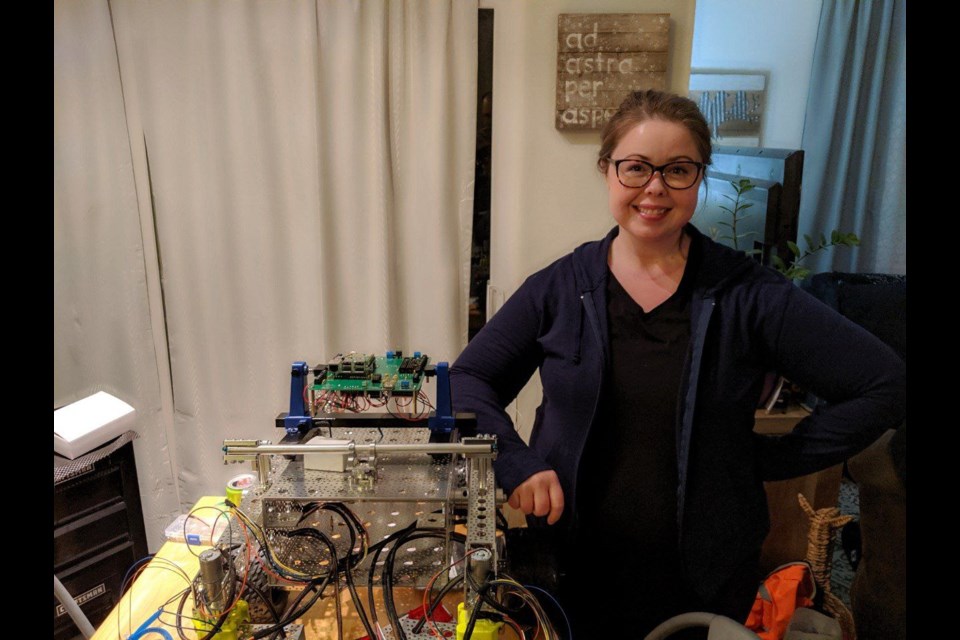WinterWinds Robotics’, a Longmont startup company, product MRFEE (pronounced “murphy”) was accepted into NASA’s Small Business Innovation Research (SBIR) Phase one program for the 2022 fiscal year.
MRFEE is a hyper portable Air Traffic Control (ATC) radar system that can be put in areas affected by wildfires, said WinterWinds founder Valerie Eastman. The device can self-organize and automatically mobilize where fire suppression efforts are most likely to require aerial support.
The device aids firefighters and other organizations to identify the areas where responders should respond with aerial support.
After Eastman and her colleagues discovered the SBIR Phase One application for 2022, inspiration struck on how they could develop a smart sensor.
“The reason that’s all important is because wildfires move really, really quickly, as we saw, unfortunately with the Marshall fire, which was one of the main drivers of what made us propose this proof of concept,” Eastman said.
A large portion of the WinterWinds Robotics staff lives in areas that were affected by the Marshall fire.
The Marshall fire made Eastman realize that they had to do something to help in future wildfire events.
“In addition to giving our time, talent, and treasure in the wake of that, we needed to leverage our technical expertise to bring something really meaningful to our community. Even though we are in Longmont; Louisville, Superior and Broomfiled are our neighbors,” Eastman said.
While the product is being designed to aid in wildfire efforts, it could also be used on other celestial bodies within space.
“It's kind of the benefit of this technology. It can deploy and coordinate mobile resources wherever there is a lack of steady infrastructure, so not just in wildfires, but during early lunar and Martian operations,” Eastman said.
The device can just as easily coordinate ground assets on celestial bodies as it can coordinate aerial assets for wildfires.
The SBIR phase one program through NASA gives small businesses the opportunity to commercialize their product. Phase one is the proof of concept phase where WinterWinds robotics will meet with people in the NASA SBIR program to ensure they are meeting the milestones they proposed in their application.
WinterWinds Robotics is 1 of 280 tech companies to be entered into the program. The company or nonprofit must have less than 500 employees.
For phase one, the company will receive $150,000. At the end of a six month period, the company will be evaluated again and considered for phase two. It is not guaranteed, but Eastman hopes to be a part of SBIR Phase 2.
“So that is our intention to knock this out of the park and get this as close to deployment as we can, and then try for phase two because we really believe in the transformational value of this to keep the Front Range safe from the devastation we all witnessed with the Marshall fire,” Eastman said.
WinterWinds Robotics wants to do work that moves the needle on technological innovation and human well being. In the future, the company aims to keep creating technology that furthers their mission.
“Our hearts are always trying to conceive of and deploy technologies that help humans right here, right now, in these harsh and dangerous situations such as the Marshall fire,” Eastman said.



